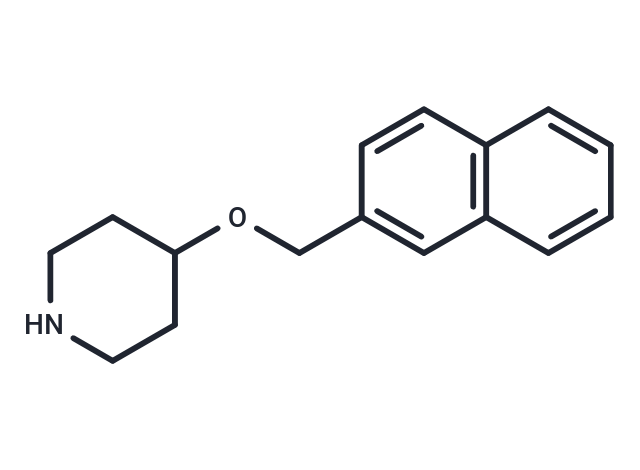Shopping Cart
Remove All Your shopping cart is currently empty
Your shopping cart is currently empty
Litoxetine is a selective 5-HT uptake inhibitor and is a 5-HT3 receptor antagonist. Litoxetine acts as an antidepressant and has shown antiemetic properties in ferrets. Litoxetine (1 and 10 mg/kg i.v.) dose-dependently reduced the number of regurgitations and vomiting and delayed the onset of vomiting. Litoxetine has an affinity for brain 5HT3 receptors (Ki = 85 nM).

| Pack Size | Price | USA Warehouse | Global Warehouse | Quantity |
|---|---|---|---|---|
| 1 mg | $98 | In Stock | In Stock | |
| 5 mg | $229 | In Stock | In Stock | |
| 10 mg | $343 | In Stock | In Stock | |
| 25 mg | $586 | In Stock | In Stock | |
| 50 mg | $838 | In Stock | In Stock | |
| 100 mg | $1,160 | In Stock | In Stock | |
| 500 mg | $2,320 | - | In Stock | |
| 1 mL x 10 mM (in DMSO) | $198 | In Stock | In Stock |
| Description | Litoxetine is a selective 5-HT uptake inhibitor and is a 5-HT3 receptor antagonist. Litoxetine acts as an antidepressant and has shown antiemetic properties in ferrets. Litoxetine (1 and 10 mg/kg i.v.) dose-dependently reduced the number of regurgitations and vomiting and delayed the onset of vomiting. Litoxetine has an affinity for brain 5HT3 receptors (Ki = 85 nM). |
| Targets&IC50 | [3H]-DAU 6215:0.3 microM |
| In vitro | Litoxetine (0.3-3 microM) antagonized the high- and low-potency phases of the 5-HT curve.[1] Litoxetine (1 and 3 microM) responses to 5-MeOT were shifted to the right in a concentration-dependent manner.[1] |
| In vivo | Litoxetine (twice daily for 4 days), a novel specific serotonin reuptake inhibitor.[2] |
| Molecular Weight | 241.33 |
| Formula | C16H19NO |
| Cas No. | 86811-09-8 |
| Smiles | C(OC1CCNCC1)C2=CC3=C(C=C2)C=CC=C3 |
| Color | White |
| Appearance | Solid |
| Storage | Powder: -20°C for 3 years | In solvent: -80°C for 1 year | Shipping with blue ice/Shipping at ambient temperature. | |||||||||||||||||||||||||
| Solubility Information | DMSO: 10 mg/mL (41.44 mM), Sonication is recommended. | |||||||||||||||||||||||||
Solution Preparation Table | ||||||||||||||||||||||||||
DMSO
| ||||||||||||||||||||||||||
| Size | Quantity | Unit Price | Amount | Operation |
|---|

Copyright © 2015-2026 TargetMol Chemicals Inc. All Rights Reserved.